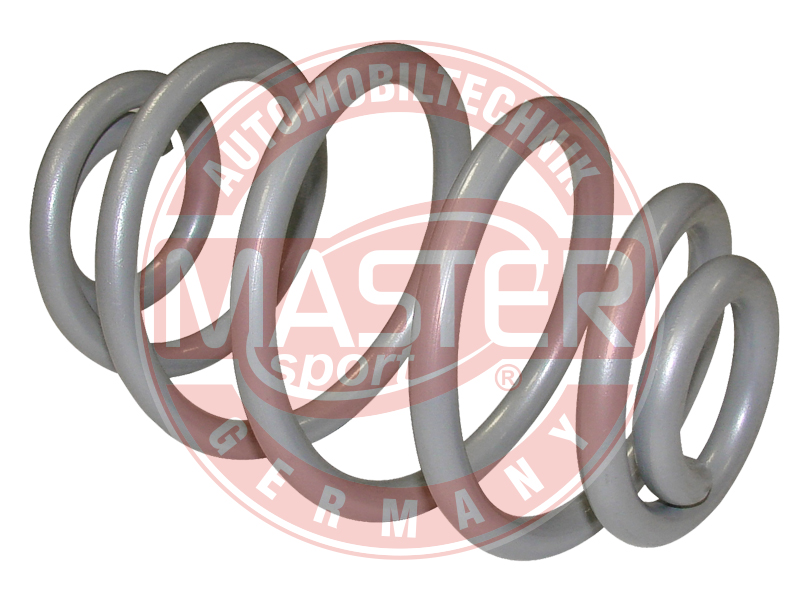Speaking of modern suspension, we usually think of rockers, shock absorbers and torsion rods, even though the suspension and anti-sway system of the car body is much more complex. One of the basic components of the suspension is … the suspension spring.
Theoretically, it is only a piece of wire that has been coiled under the influence of high temperatures. In reality, however, this “piece of wire” must have certain properties of the material, suitable diameter, must have undergone heat treatment, and the number of spring coils has a significant effect on its damping properties.
In cars, coil springs and mini-block springs are widespread. While the former are the traditional solution that everyone had seen repeatedly, the “mini-block” variants are characterized by varying diameter of the rod and varying diameter of individual coils. This solution is characterized by high progressiveness, and also saves space, thus providing a more impressive design of the car exterior.
The springs perform a very important task in suspension, since they keep the weight of the car and relieve the vibrations resulting from driving on uneven surfaces. They have a progressive characteristic – the stiffness of the spring increases with the increasing load. This improves the frequency of vibration of the vehicle in terms of comfort and health (due to the frequency of vibration in human organs). Together with the dampers (for more info on dampers, see the text: Shock absorber – the gray eminence of comfort and safety), they provide comfort, maintain traction to the surface and allow safe driving.
The frequent use of the springs in the design of cars is due to their structural simplicity and the lack of need for additional maintenance during operation. This does not mean, however, that the springs should not be checked. Like all wear parts, also the suspension springs are subject to processes of wear and only the number of kilometers driven and the course of operation (type of roads, weather conditions, load) determine how long they will retain their technical parameters.
Unfortunately, the state of Polish roads, although improving year by year, still leaves much to be desired. The use of poor-quality road pavement layers for construction, and the lack of proper foundation results in numerous pot holes, cracks and collapses each winter. Falling into a pot hole in the roadway may result in breakage of the tire, wheel damage, and damage to many parts of the suspension and, in particular – shock absorbers and suspension springs.
This does not mean, however, that if you do not hit a hole, the springs will remain reliable. The reasons for cracking springs may also involve weather conditions and frequent traveling on roads that were poured with brine. This may lead to corrosion, which greatly weakens the spring and hinders its correct operation due to the loss of suitable factory stiffness. A common cause of damage is also the excessive load on the car. In this case there are changes in the characteristics of the springs and, as a result of internal stress – cracking.
It is worth remembering that the spring operates (is loaded) even when the car does not move. Thus, the material is constantly undergoing plastic deformation and after some time, loses its original characteristics
How to tell whether the springs are damaged?
The easiest way is to observe the car standing on a flat surface. If you see that the car is tilted in relation to the other side, or that wheel arch on the right-left side has a different height above the wheel, you should thoroughly examine the springs.
In order to thoroughly investigate the springs, raise the car on a lift (the weight will be relieved and the spring will expand) and check for ruptured coils. Cracks most often arise in outermost coils, which means special attention should be paid to the ends of the springs.
However, rupture of the material is not the only thing that makes the spring require replacement. As mentioned earlier, the material is constantly undergoing fatigue, and a change of characteristics occurs due to overload. It is therefore important to observe whether the vehicle under load (both by passengers and the cargo in the trunk) deflects uniformly, and whether there is no excessive deflection.
It is best to check the springs while checking the shock absorbers at a diagnostic station (i.e. during the mandatory technical inspection)
Why replace suspension springs?
Replacement of suspension springs is aimed at restoring the correct height of the vehicle relative to the road surface and maintaining the contact between the wheels and the ground. This procedure will improve the quality of driving and increase the safety of motion stability. The replacement also gives you the confidence that other elements of the suspension will not be overexploited, so that its lifespan will extend.
What should we remember?
First of all, the two springs on the same axis are always replaced together. Replacement of only on one spring on either side of the vehicle is discouraged. When replacing the springs, also remember to check all suspension components, which are easily accessible after dismantling the springs. This will provide faster diagnosis and allows avoiding any subsequent disassembly of the suspension.
Second, it is important to buy the spring from a good manufacturer. Automotive suspension springs must be made of high quality chrome-silicon steel wire. Chromium increases the steel’s resistance to corrosion, increases its elasticity and inhibits stress relaxation. Whereas silicon increases hardenability of the steel and inhibits the decrease in hardness during tempering. Of course, no one is able to determine what alloys the spring was made of just by looking at it, hence the need to look for reliable companies. While a small company would often sell inferior products in order to make a quick profit, a large one would not risk its reputation in the market just to make some money selling inferior springs. Such company policy would result in destroying its good name for the entire range of products.
Thirdly, while purchasing new springs, you should also protect against the effects of bad road and weather conditions. For example, the suspension springs offered by Master Sport also use a special epoxy film protecting the springs against corrosion. Thanks to this, the springs can withstand long-term operation in the toughest conditions.
Replacement of suspension springs
When replacing the springs, remember that then you must also thoroughly check the condition of other suspension components, such as swingarms, shock absorbers or stabilizers, and the state of their connection to the body.
It is also worth paying attention to the correct assembly of products. Doing this unprofessionally, carelessly and without proper assessment of the technical quality of the working components may result not only in a faster deterioration of parts, but also in damaging other components. Hence, it is worth commissioning the replacement to authorized specialists whose employees are properly qualified.



